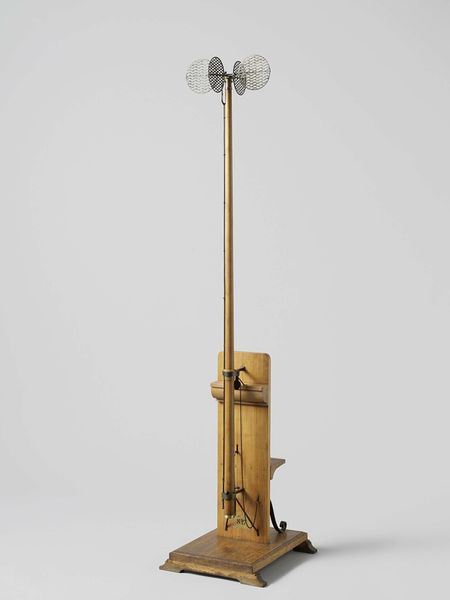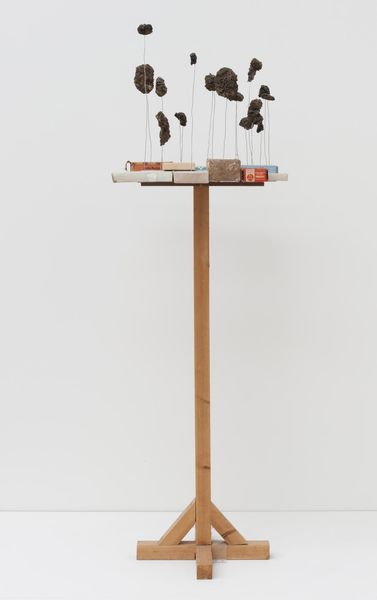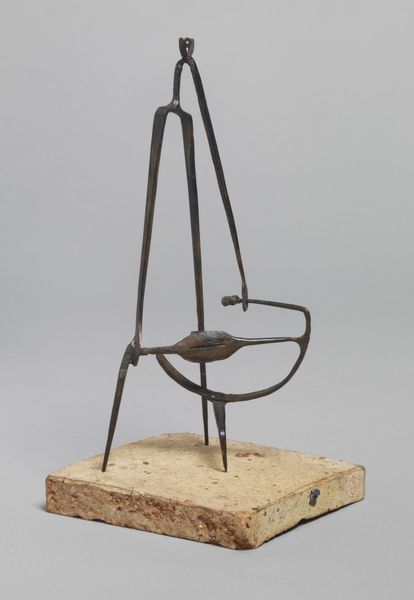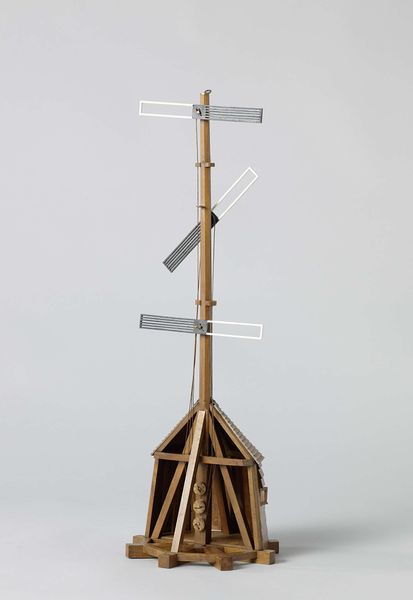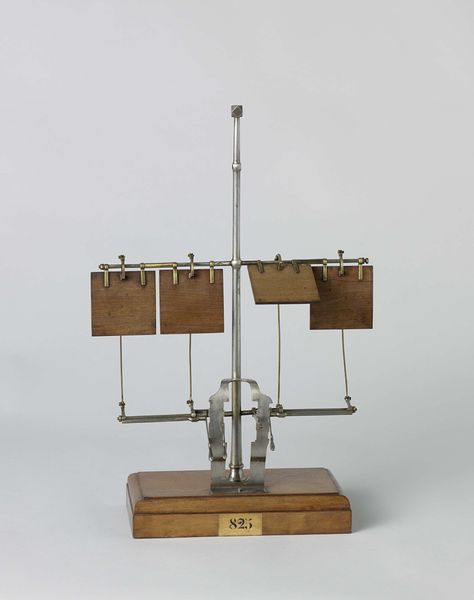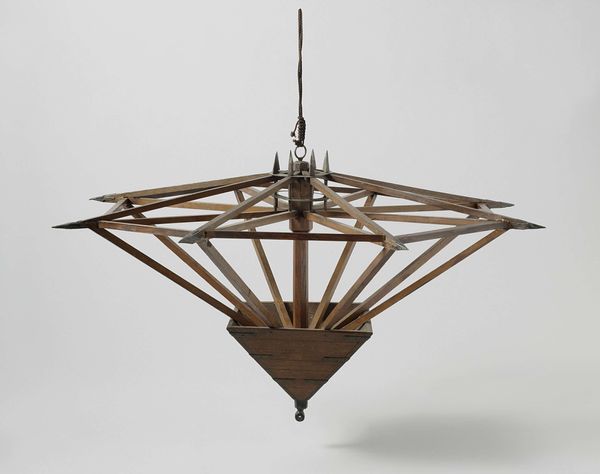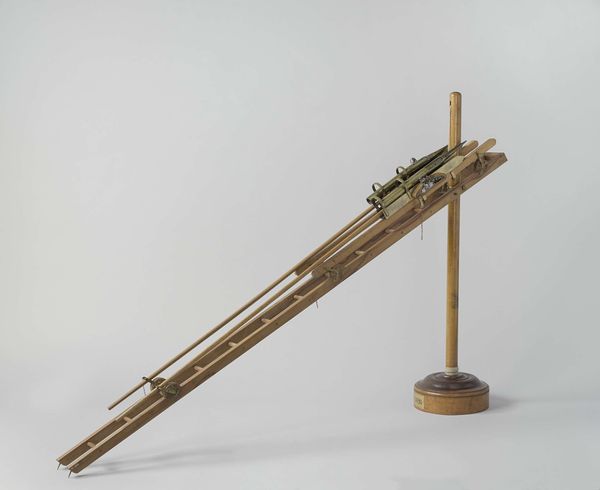
#
3d model
#
3d rendering
#
3d image
#
3d printed part
#
plastic material rendering
#
virtual 3d design
#
3d shape
#
3d digital graphic
#
metallic object render
#
3d modeling
Dimensions: model height 113.5 cm, model width 64.5 cm, model depth 64.5 cm, packaging capsule height 120.5 cm, packaging capsule width 64.5 cm, packaging capsule depth 64.5 cm
Copyright: Rijks Museum: Open Domain
Editor: This is a "Model of a Land Beacon," dating from around 1850 to 1855. It's an intricate object, and the material looks like iron or steel. There's a stark quality to it, yet the construction seems almost delicate. What significance would a land beacon have had in that period? Curator: Land beacons, though less romantic than lighthouses, played a critical role in maritime infrastructure. This model likely served as a proposal or design for a structure intended to guide ships into port, particularly during the rise of global trade in the mid-19th century. Notice how the skeletal structure would have allowed for visibility from various angles, emphasizing function over pure aesthetics. These beacons represented a direct intersection of engineering and navigational authority, often built and maintained through state-sponsored projects, reflecting a government's commitment to trade and national security. Editor: So, its appearance, or even its design wasn't necessarily a choice based solely on artistic considerations? Curator: Precisely. The skeletal appearance isn't just aesthetic. Think about the environment in which it would stand. Coastal regions are often windy; this design would reduce wind resistance. The cage at the top, presumably for a light, is both functional and symbolic, representing technological advancement, making trade routes safer and more efficient. This links it directly to industrial-era ambitions of control over nature and the facilitation of global commerce. The construction of these navigational aids underscored expanding empires. How do you feel knowing all that? Editor: That's interesting, viewing it now, not just as a static object, but within the historical context. You almost get a sense of the era’s drive towards efficiency and expanding trade routes. Thank you! Curator: Indeed. Art isn’t created in a vacuum; these "Land Beacons" were testaments to societal and political changes of their time. A model allows us to freeze that specific intent, which can be sometimes hard to glean, viewing just the artifact itself.
Comments
No comments
Be the first to comment and join the conversation on the ultimate creative platform.

